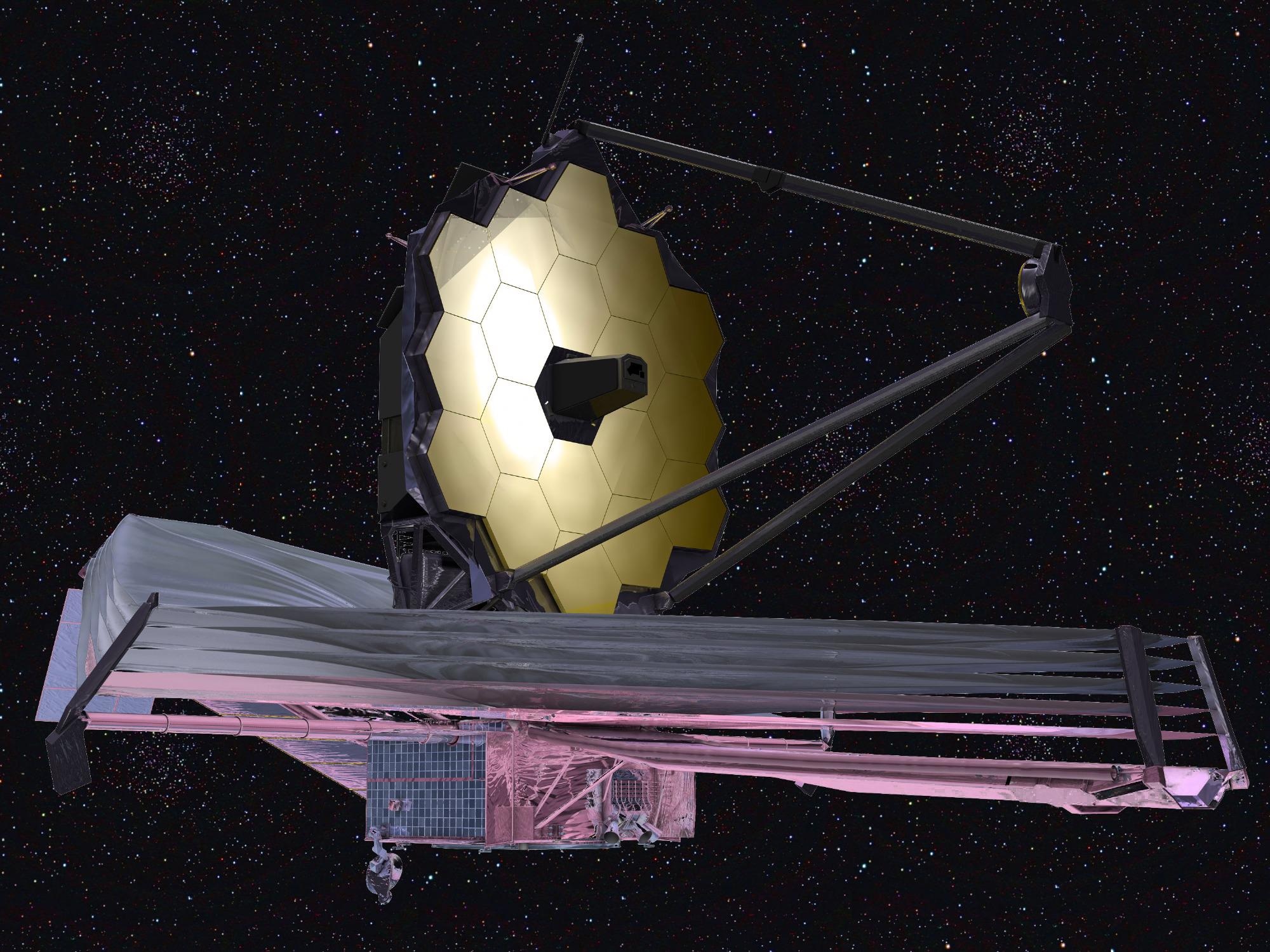The most powerful telescope in the world is scheduled to be launched into space this year. When that happens, researchers will be able to discover whether Earth-sized planets in the “solar neighborhood” have a vital precondition for life — an atmosphere.
 Artist conception of the James Webb Space Telescope, successor to the Hubble Space Telescope. Image Credit: NASA.
Artist conception of the James Webb Space Telescope, successor to the Hubble Space Telescope. Image Credit: NASA.
These planets orbit the tiniest and most common type of star in the galaxy, an M-dwarf. At present, researchers do not know how common it is for Earth-like planets around this type of star to possess features that would render them fit for habitation.
As a starting place, it is important to know whether small, rocky planets orbiting M-dwarfs have atmospheres. If so, it opens up our search for life outside our solar system.
Daria Pidhorodetska, Doctoral Student, Department of Earth and Planetary Sciences, UC Riverside
To gather more insights into this, Pidhorodetska and her team analyzed whether the soon-to-launch James Webb Space Telescope or the presently-in-orbit Hubble Space Telescope, are proficient in detecting atmospheres on these planets.
They also modeled probable atmosphere types that may be found, if they exist, and how they could be differentiated from each other. Their research efforts have been published in the Astronomical Journal.
Study co-authors include astrobiologists Stephen Kane and Edward Schwieterman from UC Riverside, as well as researchers from NASA’s Goddard Space Flight Center, Johns Hopkins University, Cornell University and the University of Chicago.
The focal point of the study is an M-dwarf star referred to as L 98-59, which measures merely 8% of the sun’s mass. Although small, L 98-59 is just 35 light-years from Earth. Its relative closeness and brightness make it a perfect target for observation.
Soon after they develop, M-dwarfs experience a period in which they can shine two orders of magnitude brighter than usual. Strong UV radiation throughout this period tends to dry out their orbiting planets, terminating many gases in the atmosphere, and vaporizing any water from the surface.
We wanted to know if the ablation was complete in the case of the two rocky planets, or if those terrestrial worlds were able to replenish their atmospheres.
Daria Pidhorodetska, Doctoral Student, Department of Earth and Planetary Sciences, UC Riverside
The scientists prepared four different atmospheric settings: one in which water dominates the L 98-59 worlds, one in which the atmosphere is mostly made up of hydrogen, a Venus-like carbon dioxide atmosphere and one wherein the atmosphere’s hydrogen disappears into space, leaving behind only ozone and oxygen.
They learned that the two telescopes could provide corresponding information using transit observations, which measure a dip in light that happens as a planet travels in front of its star. The L 98-59 planets are a lot closer to their star compared to Earth and its sun.
They are able to complete orbiting within a week, making transit observations by telescope faster and more economical than observing other systems where the planets are very far from their stars.
It would only take a few transits with Hubble to detect or rule out a hydrogen- or steam-dominated atmosphere without clouds. With as few as 20 transits, Webb would allow us to characterize gases in heavy carbon dioxide or oxygen-dominated atmospheres.
Edward Schwieterman, Study co-author and Astrobiologists, UC Riverside
Out of the four atmospheric settings considered by the scientists, Pidhorodetska stated that the dried-out oxygen-dominated atmosphere is the most prospective.
“The amount of radiation these planets are getting at that distance from the star is intense,” she said.
Although they may not possess atmospheres that would aid life currently, these planets can provide a significant indication into what might happen to Earth under various circumstances, and what might be probable on Earth-like worlds somewhere else in the galaxy.
Only in 2019, the L 98-59 system was discovered, and Pidhorodetska said she is eager to get further information about it when the James Webb Space Telescope launches later this year.
We’re on the precipice of revealing the secrets of a star system that was hidden until very recently.
Daria Pidhorodetska, Doctoral Student, Department of Earth and Planetary Sciences, UC Riverside
Journal Reference:
Pidhorodetska, D., et al. (2021) L 98-59: A Benchmark System of Small Planets for Future Atmospheric Characterization. The American Astronomical Society. doi.org/10.3847/1538-3881/ac1171.